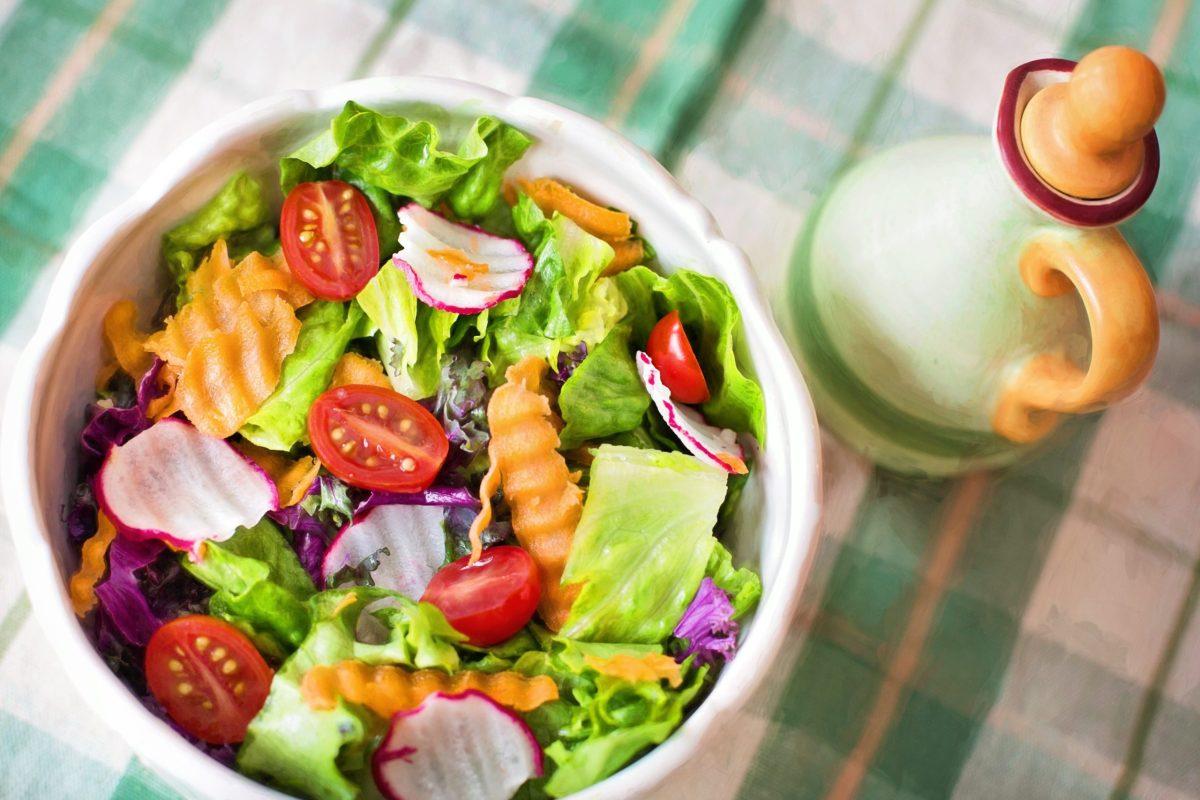Have you ever wondered what it would be like to eat entirely plant-based? From Jan. 28 to Feb. 4, I went vegan in the hopes of learning more about the life that a vegan NJIT student might experience. Spoiler alert: it wasn’t easy. However, the experience did have its merits.
I’ll preface this article by stating that I’ve been vegetarian for 10 years, so dietary restrictions are familiar to me. Most of my daily caloric intake, however, comes from milk, cheese, and eggs sunny-side-up. Therefore, I envisioned a rough week — but the thought of being forced out of my comfort zone and understanding this lifestyle was exciting, too.
When I started this week, there were a few ground rules that I set for myself. The first was to only eat at Gourmet Dining Services or restaurants on campus, in order to best mimic the limited options that students have. When I had to go home for a night, I visited Dunkin’ instead of other fast-food chains because there’s a Dunkin’ around the corner from the William S. Guttenberg Information Technologies Center.
Secondly, I tried not to throw random things together on a plate, like dry cereal and mushrooms. Although this is my preferred ingestion technique, I have been told that this is too loose a definition for an “actual meal.” You’ll find out, however, that there were times when I didn’t have much of a choice.
Lastly, I wanted to employ a strict version of vegan-ness. This meant no eating items that had been in contact with animal products. When Forte’s pizza arrived at The Vector’s weekly meeting on Friday from 11:30 a.m. to 1 p.m. in room 466 in the Campus Center, you can imagine how difficult it was to resist peeling off all the cheese and eating the soggy crust plain like a damp paper towel. Alas.
Despite such challenges, the seven days are over at last, and I’m happy to report my findings to everyone on the fence about making this jump. Of course, I’ll start off with the most important meal of the day.
Breakfast
For this meal, there are only a few real contenders; these are the dining hall, the Tech Café, and the C-Store. I was honestly very disappointed with these; not only are there little to no vegan products, but they are also much worse-tasting than at other times of the day.
During a Gourmet Dining Services breakfast, the potatoes, whether in slivered, hash brown patty, or diced format, are almost always vegan. The bad news is that little else is. There is often some sort of mystery vegan protein hash available, but it is not a staple and frankly, that’s a good thing.
There is oat milk available, but it often comes out much more diluted than commercial oat milk and does not taste of anything. The end result is that breakfast must consist of fried potatoes, fruit, bagels, or toast with jelly or peanut butter. Even the oatmeal sometimes contains milk already.
I think one way to make breakfast a little more vegan-friendly — and interesting — would be swapping out the menu every day and incorporating a more diverse cultural mix. The lunch and dinner menus rotate daily; for example, the South Asian bread naan is served every few weeks, albeit a poor facsimile. In contrast, the breakfast menu is always scrambled eggs, french toast or pancakes, potatoes, and sausages.
The highlight recipe for this week was contributed by Sriramya Ganisetti, a second-year electrical and computer engineering technology major. Toast some bread, race to the banana stand in the dining hall to grab one before they are mauled, and spread peanut butter onto the toast. Pile banana coins onto the slice, and voilà!
This meal has healthy fats, carbohydrates, and some protein. Pairing it with more fresh fruit or chia seeds will also up its fiber content. However, what if you’re deathly allergic to tree nuts, like Ganisetti?
Tough luck. Maybe you can stop by the Tech Café for a vegan cookie and black coffee. When I asked whether they carried any vegan milks, I was informed, “We’re not Starbucks!”
Lunch and Dinner
This might be controversial, but I think lunch and dinner as a vegan at NJIT are not bad — as long as you can do some basic cooking, and tolerable even if you can’t. Again, however, I speak as a vegetarian who consumed plant-based protein even before this challenge.
Some of the options at Gourmet Dining Services include fries, vegetable fajitas, the hot lunch vegan protein, baked regular and sweet potatoes, salad, a sandwich, pasta, and stir-fries or fried rice. Of course, there are many downsides, such as missing out on some of the more palatable entrées like mac-and-cheese, lo mein, and quesadillas.
Additionally, although I like to cook basic meals, it is a hassle to wait in line at the fajita or cooking stations during peak rush hour. The actual process of cooking also takes five to 10 minutes at minimum, so it can certainly be a dealbreaker for those who are perennially late to class.
I think it’s important to discuss my vegetarianism in greater detail here because it had a serious impact on how I saw this week. A lot — even most — of the food available at NJIT contains meat, but because I already saw these options as “off-limits,” being vegan didn’t curtail my options much. However, for those who eat meat, this sudden narrowing of choices might be very restrictive.
Although there are options for the main meals, dessert is a bit more difficult as a vegan. Supposedly, however, the ice cream is vegan, and the Oreos on the side definitely are. The dining hall also serves vegan cookies when they are requested.
Outside of a meal plan, Bonsai Sushi has vegan sushi rolls, and the salad bar allows you to construct a bowl with your own specifications. I’d steer clear of Taco Bell, though — once I asked for a bean burrito, and mine contained beef instead. I’m sure they were busy and just misheard me, but that’s kind of a big difference!
Overall Impact
One week is usually not enough to see any drastic physical changes, no matter which diet one is following. Overall, however, I found that I visited the dining hall much more frequently than the two or three times that was my prior standard. For some reason, I wouldn’t stay full for as long as when I consumed dairy and eggs.
Part of this was simply adjustment to the new diet, and the other half was my lack of knowledge about good protein sources for vegans. Protein is known to contribute to satiety, due to the long time it takes to break down in the digestive system. It is certainly possible to maintain a good protein intake as a vegan with elements like beans, tofu, and peanut butter, which are available in Highlander Commons.
However, this can be difficult for those who are not accustomed to preparing and eating these items in large quantities. Therefore, I would consider the transition to these foods as a specific challenge involved with going vegan.
In terms of positive experiences, I felt a lot less sluggish after meals due to avoiding a sudden influx of heavier foods containing milk and cheese. Being vegan also somewhat forces you to eat more vegetables — or at least more beans — and the fiber keeps you, um, regular. Throughout the week, I added many new meals to my limited repertoire.
So should you go vegan? It depends. Rather than cutting things out of your diet, I think people can consider adding more plant-based foods in. Veganism doesn’t suit everyone’s lifestyles; the most important thing, especially for students, is feeling energized to work and learn, no matter what you eat.
If you are curious about what it’s like to go vegan, though, there are worse places to do it than NJIT. Maybe there are fewer options, and you might not be able to eat exactly what you want. However, the limited options – along with the simultaneous availability of “raw” ingredients — will allow you to create your own plant-based version.
































